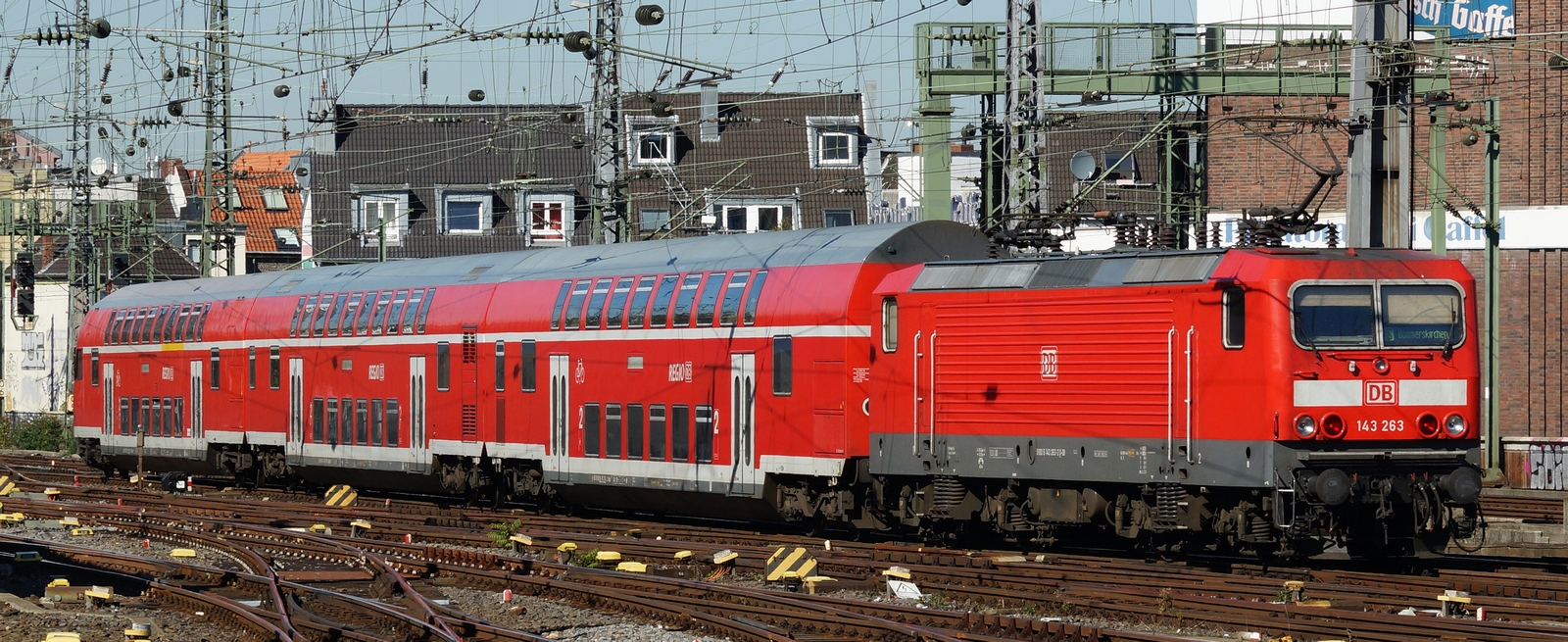When the GDR decided to further electrify its network in the late 1970s, a modern electric locomotive was needed to pull passenger and freight trains. The locomotives of the class E 11 in use in front of express trains and the E 42 in use in front of freight trains were also to be replaced. The six-axle class 250 freight locomotive was used as the technical basis, from which a four-axle mixed-traffic locomotive was developed.
The 212 001 was presented as a prototype in 1982, which was designed for a top speed of 160 km/h. Its traction motors were an evolution of, and still interchangeable with, the 250's motors. Since the speed of 160 km/h could not be used in the GDR network, the locomotive was converted to 120 km/h and the tractive effort increased. According to the scheme, the class number changed to 243.
In the area of control technology, new ground was broken that was previously unknown in the GDR. The transformer was steplessly controlled via a thyristor and the driver operated it via complex electronics. Only the desired speed and maximum tractive effort had to be preselected and the electronics automatically switched to the necessary power taps or actuated the dynamic brake. Special circuits allow for example the taps to run down automatically after the set speed has been reached once for use in local transport.
The driver's cabs were also equipped with particularly high standards of comfort and ergonomics and were air-conditioned. The locomotive body was very angular and stood out due to the longitudinal beads in the side walls. In contrast to the class 250, all machinery was ventilated via narrow grilles on the slopes along the ceiling. Starting with running number 299, the locomotives had slightly more streamlined fronts.
In addition to the prototype, a total of 646 production locomotives were built between 1984 and 1990. In the sub-class 2438, multiple controls were installed for heavy freight trains. After the traffic in the new federal states had dropped sharply after reunification, many locomotives ended up on the siding. Since the Bundesbahn also had a need for more locomotives, 150 units were rented and used as the class 143 on the Black Forest and Höllentalbahn, on the Rhein-Ruhr S-Bahn and in front of freight trains.

DB AG 143 263 with a double-deck push-pull train in Cologne in October 2015
Rolf Heinrich, Köln / CC SA 3.0
After the unification of the two German railways, the locomotives could be used more freely and ended up in large parts of Germany. They mainly replaced older West German post-war locomotives from the fifties and sixties that had reached the end of their service life. Since the rail reform, all of them have been with DB Regio and are therefore used in regional transport and on S-Bahn trains.
From 2006, one example was converted to 160 km/h and listed as class 1141. Another one received a cheaper adjustment to 140 km/h and became the class 1143. Initially, further locomotives were converted to the 1143, but these are still operated at a maximum of 120 km/h due to the lack of approval from the Federal Railway Authority.
The four variants still in use today differ in that two are each equipped for the S-Bahn and regional traffic and the other two each have push-pull train control for Bundesbahn and Reichsbahn cars. In the meantime, many locomotives have been sold to private companies, which use them mainly in front of freight trains. By April 2016, over 300 had already been scrapped. Due to the lightweight construction, it had been shown that many locomotives could not be repaired even after less serious accidents. The few examples still used by the DB today are almost exclusively used in S-Bahn operations.